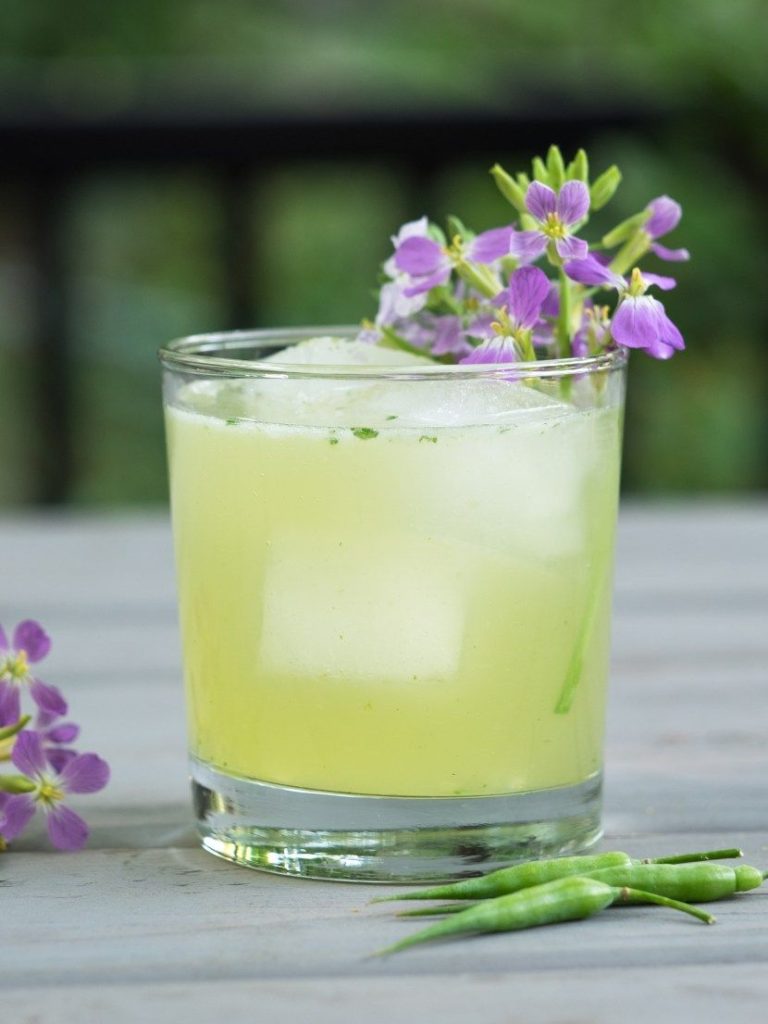
On my morning walk the other day, I came across a dense swath of wild radish plants beckoning me to take a bite. Their pods and flowers were snappy, hot, and sweet, just the thing to punch up a cocktail for margarita week…
When we think of radishes, we usually picture their bulbous roots. Wild radishes tend to have less substantial roots, however. Instead, I focus on eating the flowers and seed pods. Though peppery like a cultivated radish, these tend to be less pungent with an occasional tinge of sweetness.
Here in Southern California our wild radishes are often a hybrid of the escaped cultivated radish (Raphanus sativus) and the wild radish or jointed charlock (Raphanus raphanistrum), which are native to the Mediterranean. I’ve seen the flowers range in color from white to pale lavender, dark pink, and butter yellow. Cut some flowering stems and put them in a vase of water in your kitchen – they’ll last for a few days and you’ll find yourself scattering radish blossoms on everything. They make a fantastic garnish for salads and avocado toast.
As wild radishes go to seed, they form slender green pods or siliques that look like little serrano peppers or green beans. (These pods will look familiar with you’re acquainted with the rat’s tail radish or Raphanus sativus caudatus, an heirloom variety from Asia.) You must harvest the pods when they are young. If the pods are too old, they’ll be tough and fibrous. When they’re just right, they’re tender and crisp, perfect as a raw snack or for making peppery pickles.
In cocktails, the succulent pods can be muddled to add a note of spice, and the flowers make a beautiful edible garnish. For this drink, I paired the radish with fragrant cilantro and blanco or silver tequila. (If you hate cilantro, you can leave it out, but it really does enhance the overall aroma.) If wild radish doesn’t grow in your area, you might substitute a few slices of cultivated radish root, or the young seed pods and flowers of another brassica like mustard or arugula.
As always, I suggest picking wild foods responsibly and considering your impacts on the environment. That said, wild radish is considered to be invasive in many areas, sometimes excluding native plants. If you know of a farm or public park with wild radish growing, ask about harvesting — they may be more than happy for you to take it.
Some good resources for identifying and foraging wild radish:
• Eat the Weeds
• University of California
• Josh’s Journal
Wild Radish Margarita
Makes 1 drink
8 wild radish pods
2 tablespoons fresh cilantro leaves
3/4 ounce agave syrup (below)
3/4 ounce freshly squeezed lime juice
2 ounces blanco tequila
Ice cubes
Wild radish flowers, for garnish
Muddle the wild radish pods, cilantro leaves, agave syrup, and lime juice in the bottom of a cocktail shaker. Add the tequila. Fill the shaker with ice and shake well. Strain into an ice-filled glass. Garnish with the wild radish flowers.
Agave Syrup
Makes 1 cup
1/2 cup agave nectar
1/2 cup water
Combine the agave nectar and water in a jar. Cover the jar and shake to combine. Store in the refrigerator for up to 1 month.
